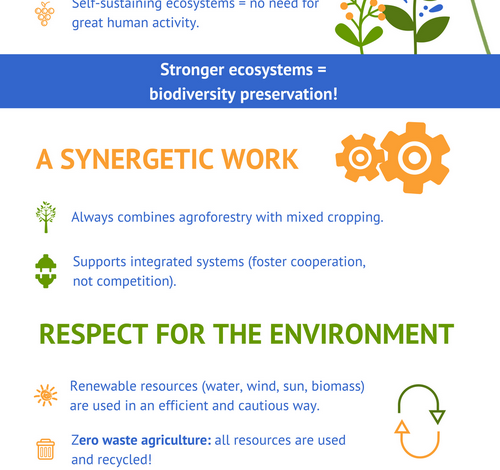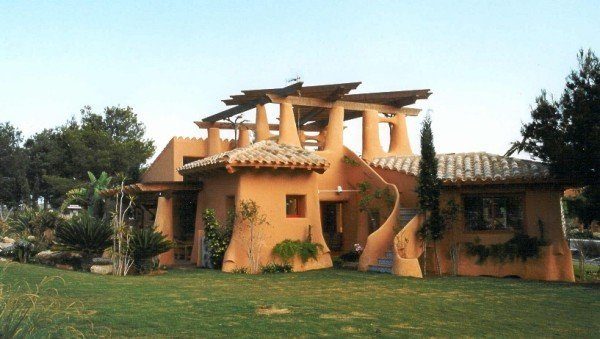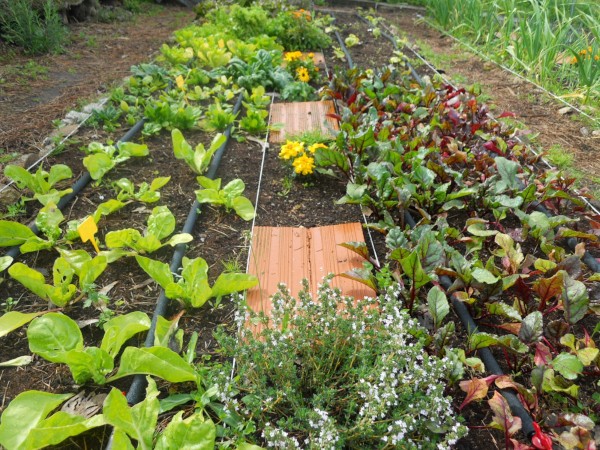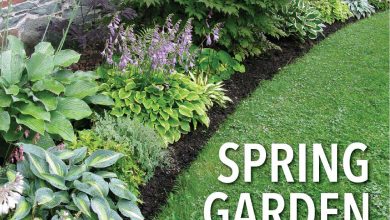Permaculture: Is it a new way of life?

After the article What is Permaculture? I suppose you will have an idea of what it represents for those who practice it: a different way of living, a return to nature so that it and its energy provide most of the things necessary to survive, and not the machines, the large multinationals with their more than elaborated products, the «artificial» fruit and vegetable industry plagued by phytosanitary products, and other industries that sell their products in large commercial areas.

Introduction to permaculture
Permaculture defends precisely a way of life that is the opposite of what most of us who live in Western cities are used to, with three fundamental objectives: caring for the Earth, caring for people and sharing resources and food in such a way that all the inhabitants of the world planet have access to sufficient and quality food.
It is, therefore, about fighting for the environment, health and equality, and in this way compensating for the damage caused by years and years of intensive exploitation of resources and the global economic and food crisis..
To achieve this there is no single path, and there are many possibilities to gradually achieve that the resources of nature (fertile soil, water, the atmosphere…) are sustainable over time, that is, so that it does not reach a moment in which they are exhausted or deteriorate without remedy, but rather that we are able to ensure their presence in the future by caring for them and consuming them at a rate lower than the rate at which they regenerate naturally.
What is the goal of permaculture?
As I said, there are many options to collaborate in the challenge of achieving a sustainable planet, and Permaculture is one of them. But also being a permaculturist there are hundreds of different actions and practices that we can carry out, that is why those who are interested in this way of doing agriculture usually attend courses, conferences, meetings, «ecovillages»… because the process of reconversion of a life transition to a life of «permanent agriculture» is not easy.
This way of living is difficult to describe and understand from the outside, that is why here is the link to a video about permaculture from the program The Green Beetle, on Spanish Television, which shows the daily activity of permaculturists and future permaculturists at the Institute of Permaculture Montsant, in Tarragona.
Permaculture experience in Asturias
I recently read an article that told the story of two young people who decided to become permaculturists and practice organic farming in Asturias. Not as a way of doing agriculture, but rather as «a way of living in communion with nature, harmoniously integrating housing and landscape». Little by little, and with a lot of effort, they are creating a «forest garden» on a 6,000 square meter plot of land.
forest-garden
But… what is a “forest garden”? -you will ask-. Well, it is a picture of what it means to do Permaculture, it is a natural or “wild” forest, which at the same time acts as an orchard and a garden. «Forest garden» comes to mean something similar to « food forest» or «forest-orchard-garden». But, like most things in life -and even more so in Permaculture-, achieving it requires a lot of time and patience, and until the age of 6 or 7 (as Richard Wade told you in the video I showed you before) reconversion to a full Permaculture is achieved.
Throughout these seven years they will populate the future forest garden with vegetation. First they started by planting trees, bushes and climbing plants (they have already planted 80 trees, 70 bushes and some climbers: they have several apple trees, pear trees, walnut trees, maples, alders, rowan trees, lime trees, bamboo, mulberry trees, vines, rose bushes, kiwis, blueberries, honeysuckle…).
Prohibited practices in permaculture
Then comes the turn of planting native perennial species, that is, typical of that area and adapted to the climate and soil, and other plants at ground level. All with the aim that between all of them they nitrogenize the soil, protect it and eliminate insects that can be harmful. This avoids plowing the land, pruning or using fertilizers or pesticides, all of which are «prohibited practices » in Permaculture.

In addition, for a year the two young people have been sharing their experiences and trying to make known what Permaculture is to promote the fight for the sustainability of the area’s resources and the increase in biodiversity, two of the fundamental pillars of Permaculture..

![Photo of The Jacaranda Tree: [Characteristics, Planting, Care, Irrigation and Substrate]](https://www.complete-gardening.com/wp-content/uploads/2022/08/the-jacaranda-tree-characteristics-planting-care-irrigation-and-substrate-390x220.png)

![Photo of 7 Pests that Affect your Orange Trees: [Detection, Causes and Solutions]](https://www.complete-gardening.com/wp-content/uploads/2022/08/7-pests-that-affect-your-orange-trees-detection-causes-and-solutions-390x220.jpg)
